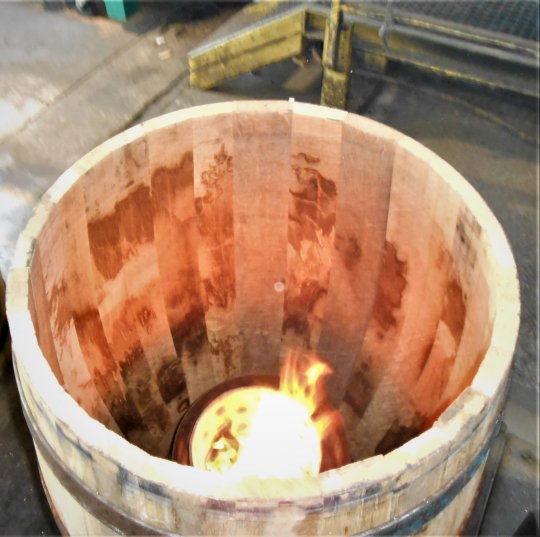What is the impact of toasting on the wine's aromatic properties?
At an aromatic level, the products of polysaccharide thermo-degradation yield three main molecules: hydroxymethylfurfural (caramel), methylfufural (toasted almond) and furfural (almond). Generally, these molecules are not present in sufficient quantities to be perceived by the majority of tasters (extraction is quite difficult). They can nevertheless bring complexity and the interaction between the different aromatic molecules is far from being established.
Then there are the products resulting from lignin thermo-degradation. The depolymerization of lignin leads to the appearance of vanillin, whose name alone evokes its odour. Pyrolysis reactions occur, which facilitate production of volatile phenols and phenyl ketones. For example, syringyl, which gives spicy, smoky aromas.
Note: the presence of water vapour is used to lower the surface temperature of the inside of the barrel during toasting and favours the breaking down of lignin.
Lastly, the Maillard reactions, responsible for the roasted odour due to three main molecules, cyclotene, iso-maltol and maltol. The cyclotene and iso-maltol content increases with the intensity of the burning.
To summarize, we have five aromatic categories:
- Lactones (wood) coconut, fresh wood, etc.
- Volatile phenols (toast) spicy, clove, smoke, etc.
- Furans (toast) coffee notes, smoked, grilled, etc.
- Vanillin and other phenol aldehydes (toast) vanilla, etc.
- Molecules resulting from burning (Cresol, maltol, etc.) grilled flavours
The proportion of these different elements will depend on the heating time and temperature.
| Molecules | Aromatics | Origin |
|---|
| Eugenol / iso-Eugenol | Cloves | Wood origin, increases with toasting |
| | Resulting from lignin thermodegradation/ a greater or lesser proportion depending on drying time and species. |
| Vanilline | Vanilla | |
| T2N (phenol aldehyde) | Freshness, wood planks if highly concentrated | Appears when lightly toasted, oxidizes easily over time. |
| Trans β-methyl-γ-octalactone (Whiskylactone) | Coconut | Quantity depends on the species, drying time |
| | 10 times more fragrant than the trans form. Highly concentrated for the Quercus Alba species |
| Cis-Whiskylactone | Coconut | |
| | Derived from polysaccharide thermodegradation |
| Hydroxymethylfurfural | Caramel | |
| | Derived from polysaccharide thermodegradation |
| Methylfurfural | Toasted almonds | |
| | Derived from polysaccharide thermodegradation |
| Furfural | Almond | |
| Syringol | Spicy, smoked | Resulting from lignin thermodegradation |
| Syringaldehyde | Drying | Resulting from lignin thermodegradation |
| Cresol | Smoked, bitterness | A result of wood burning |
| Cyclotene, iso-maltol and maltol | Grilled | A result of wood burning |

